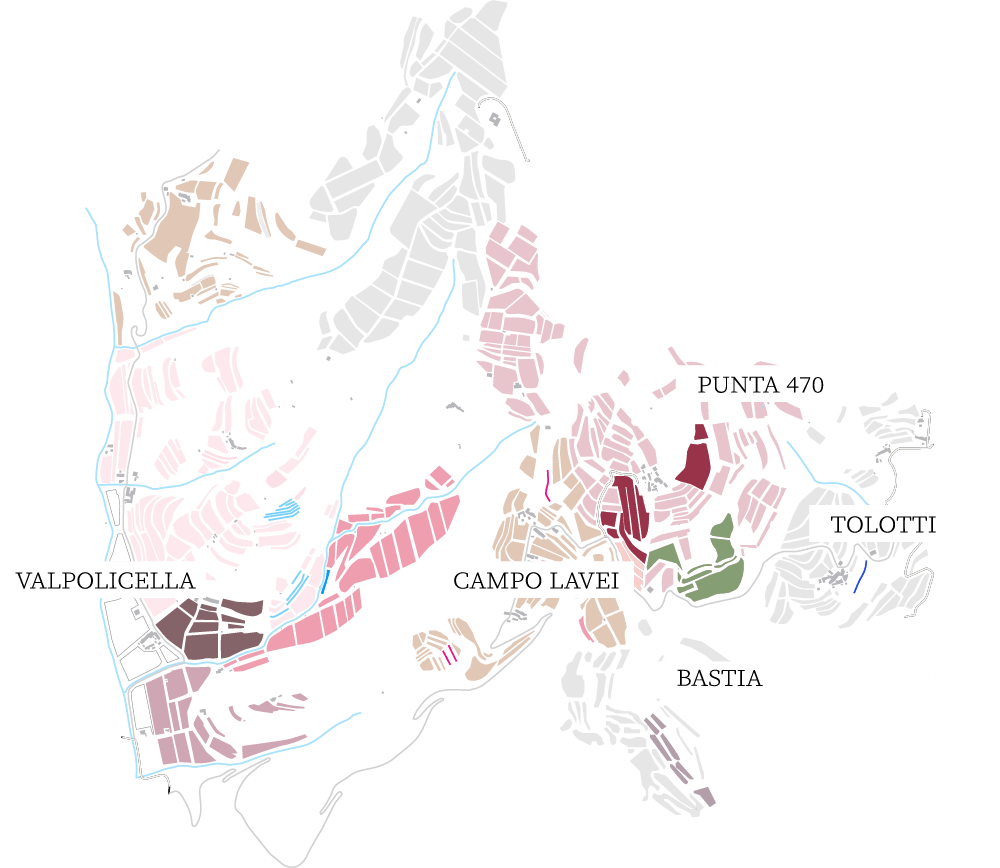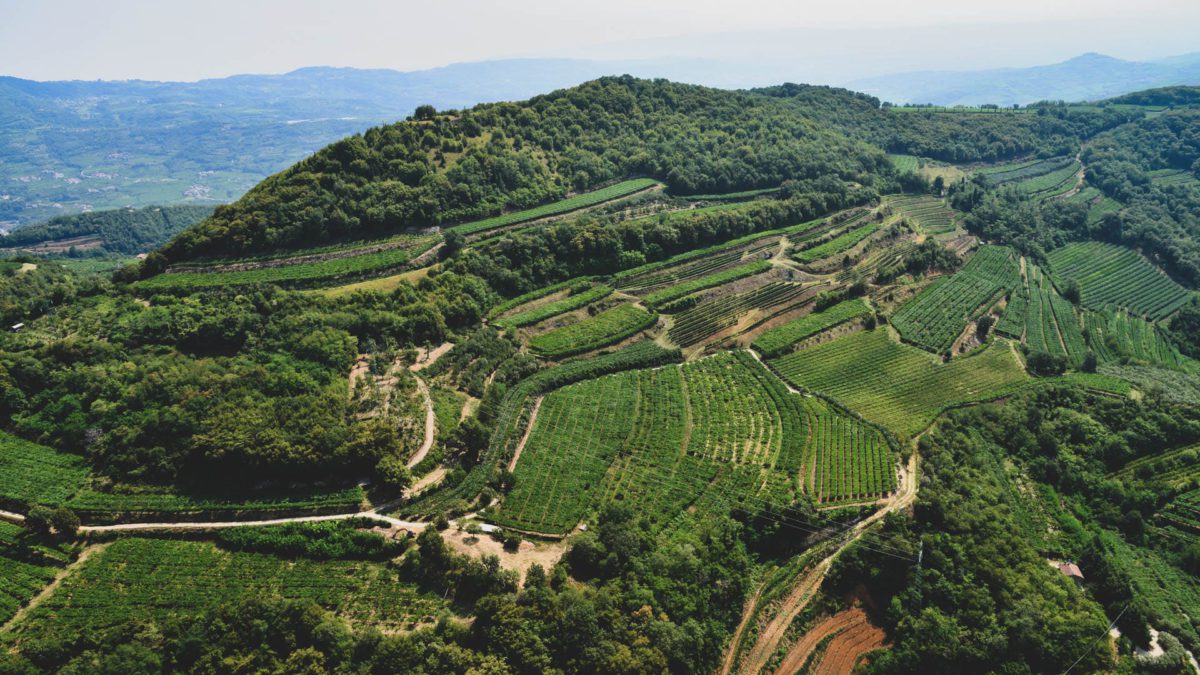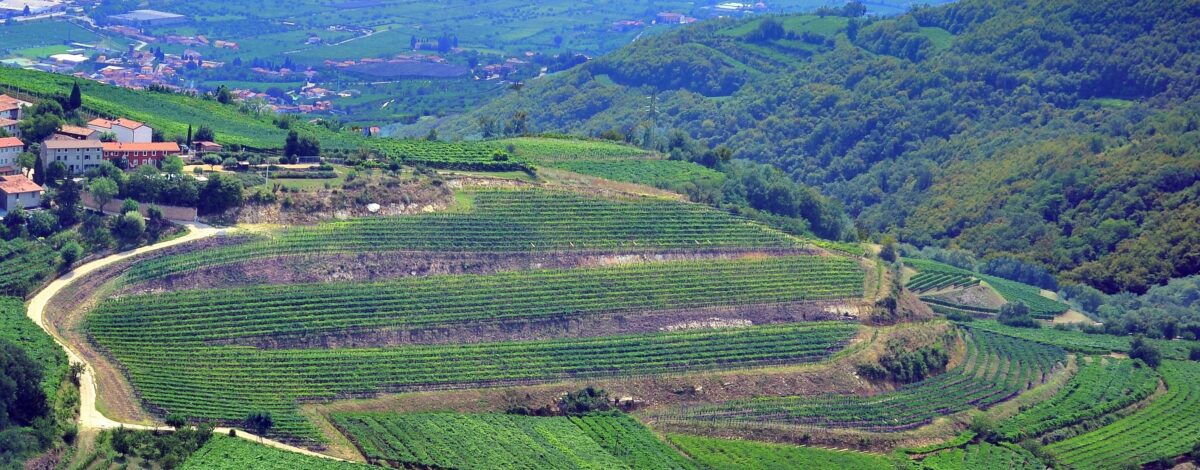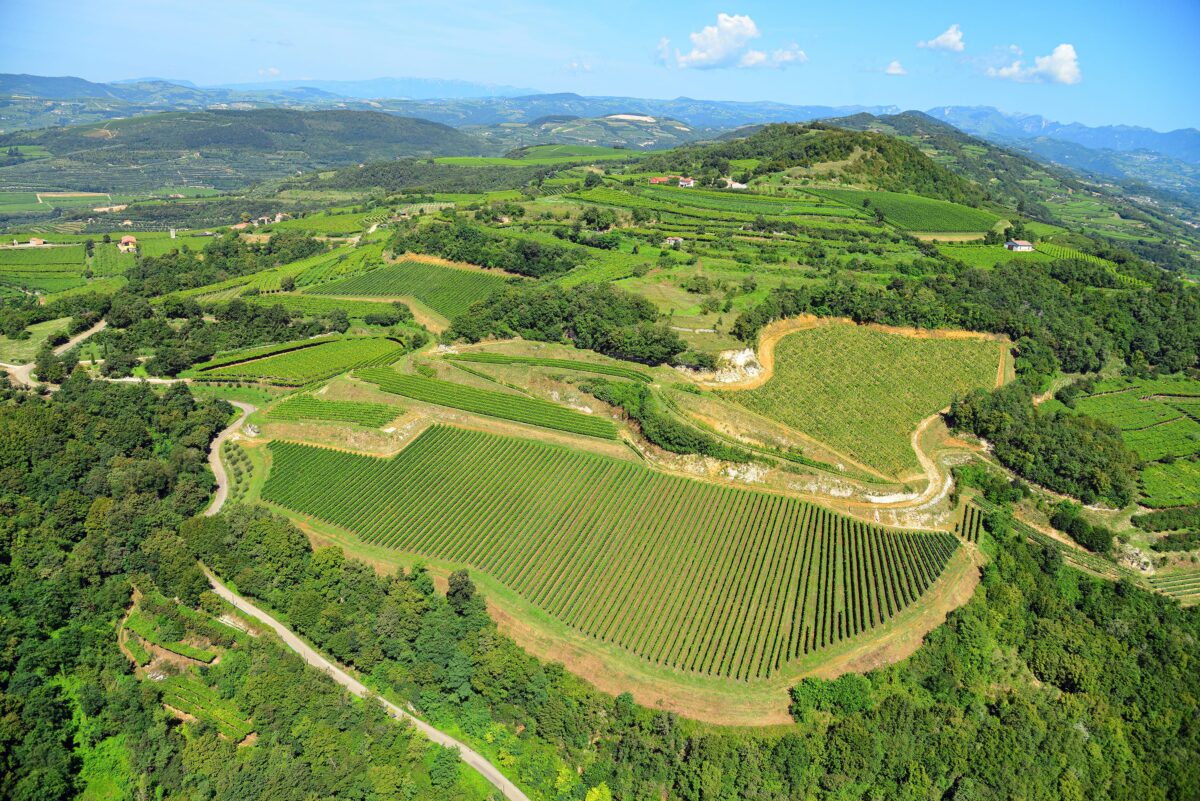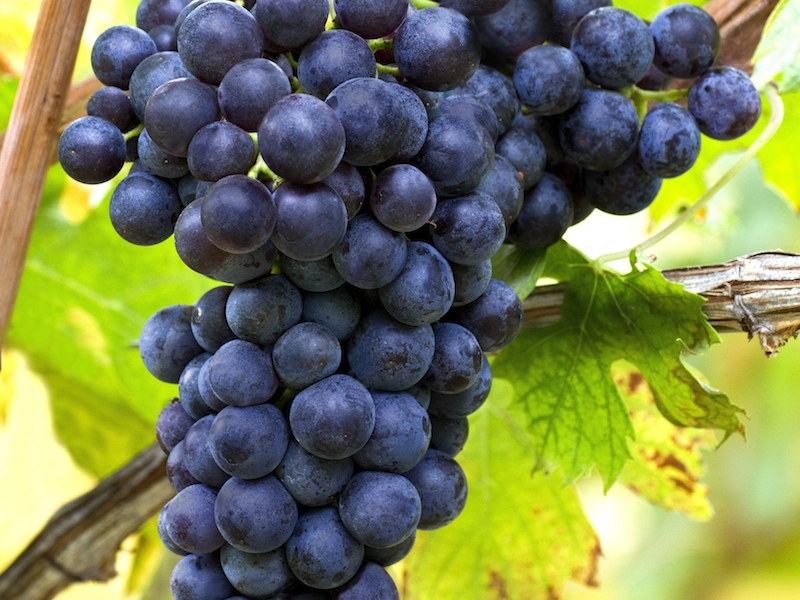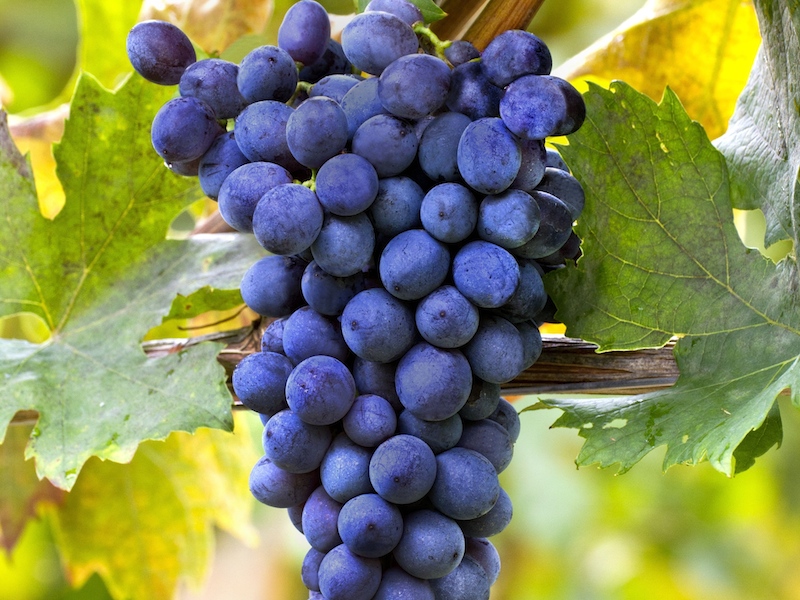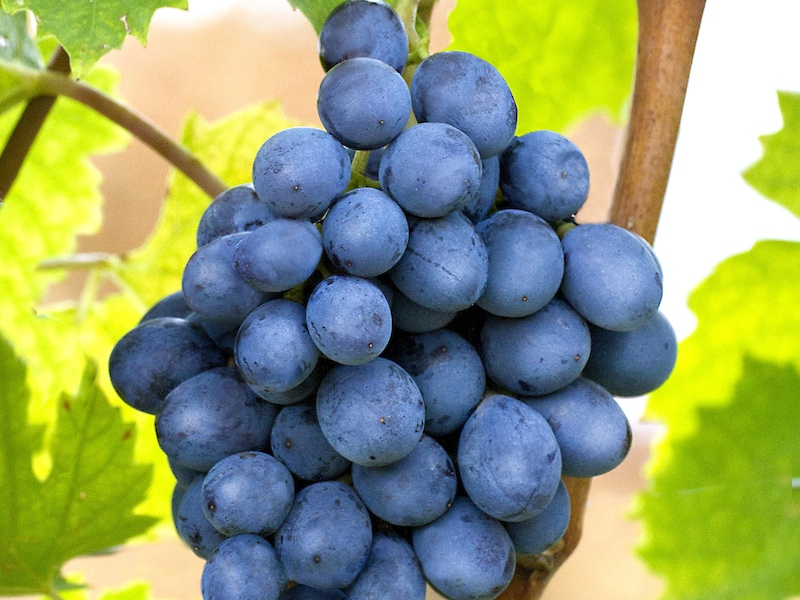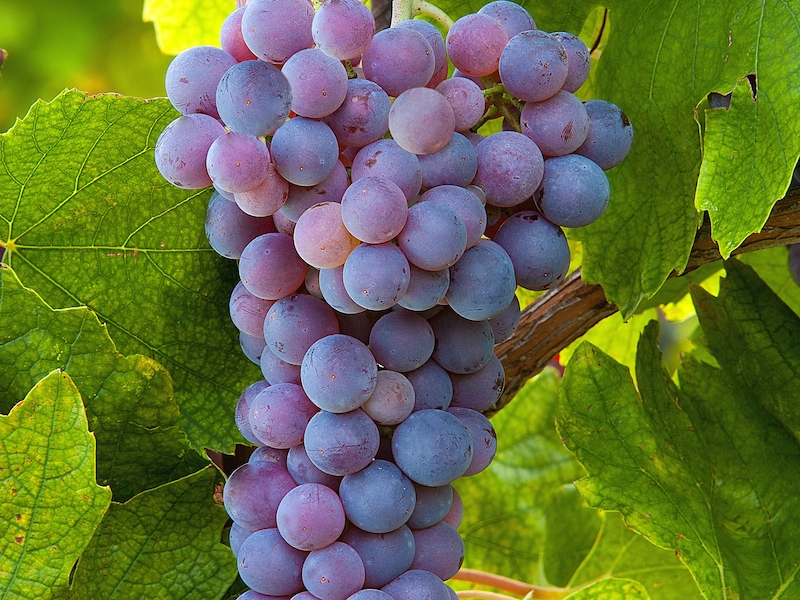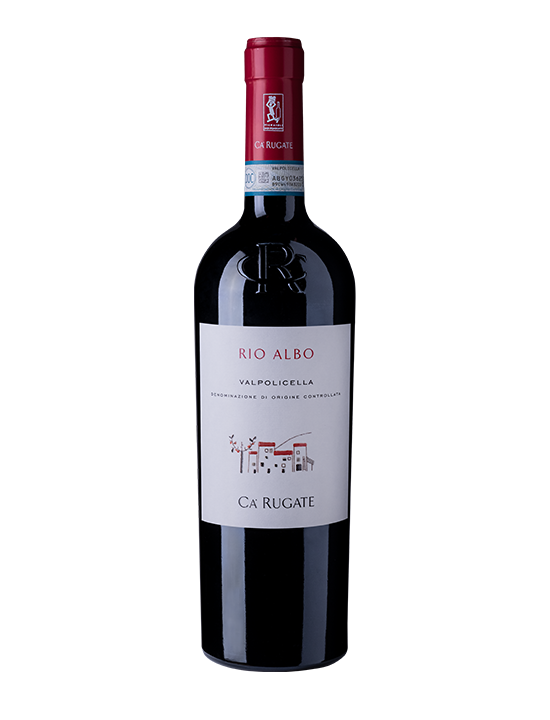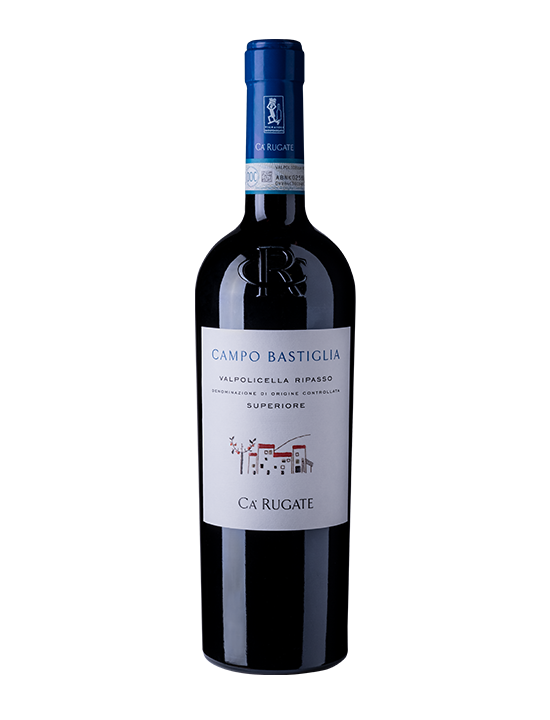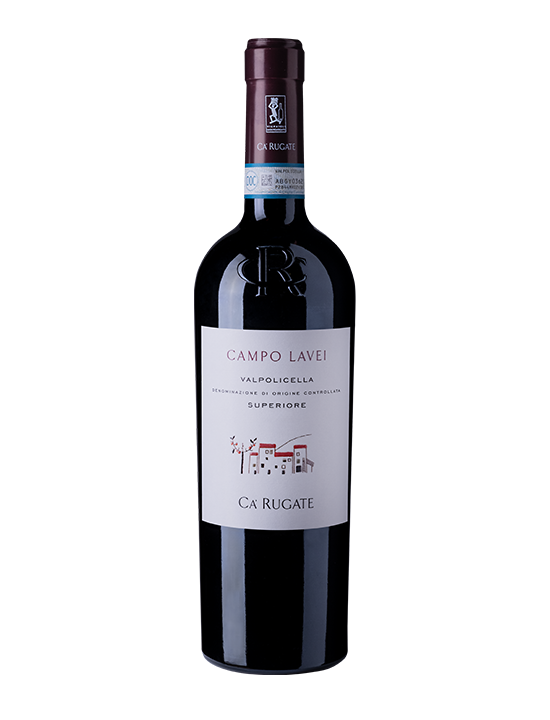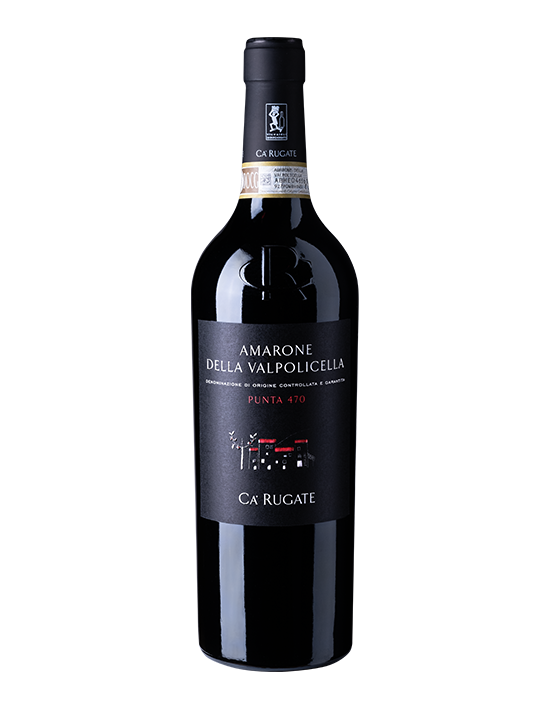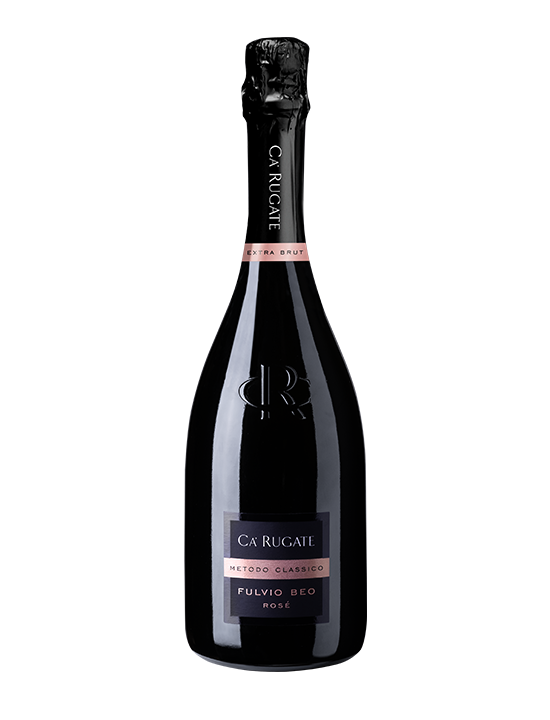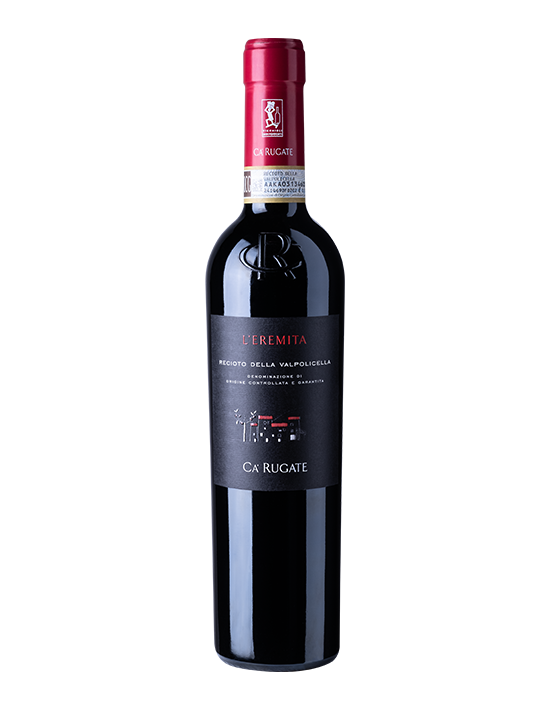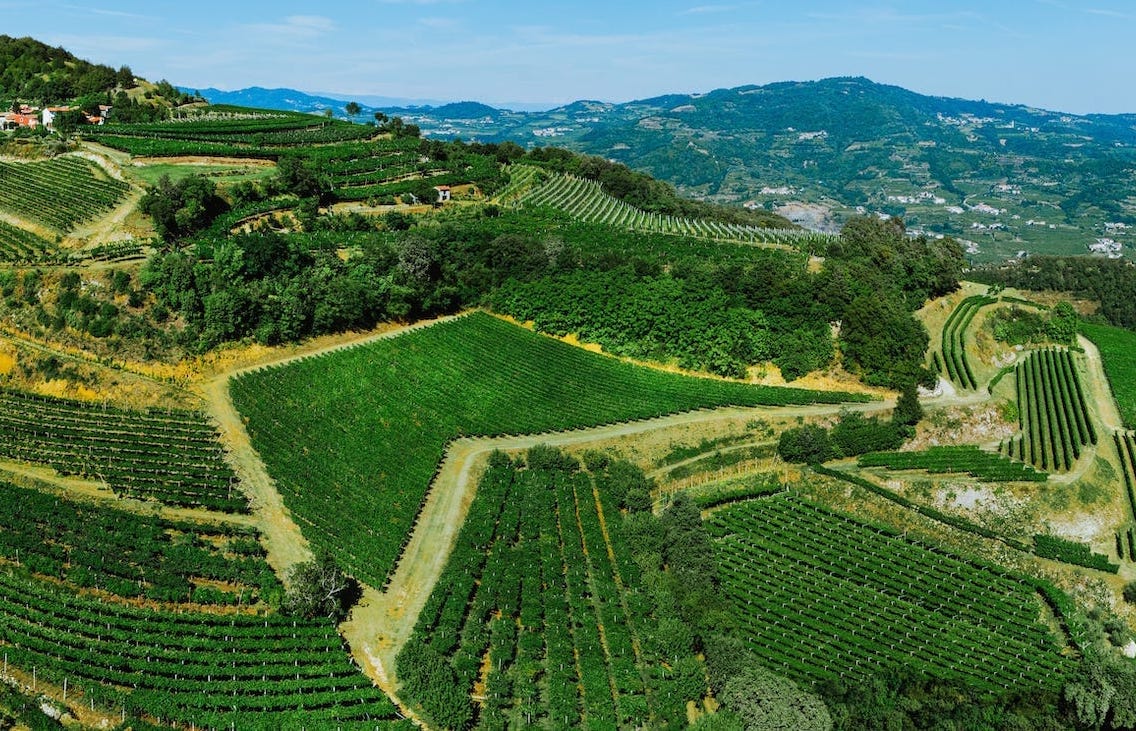The territory of Valpolicella extends over 8,000 hectares, from east to west, in the northern strip of the province of Verona.
About 3,500 of these are in the classical zone and 4,500 are in the D.O.C. zone.
Valpolicella is a polyhedric setting, consisting of terrains with very different microclimates, where the vines can express very different results in production. Valpolicella Classica is north-west of Verona, while to the north-east is the Valpolicella D.O.C. area. Right there, straddling a gentle slope which dominates the valleys of Alpone and Cazzano di Tramigna, in the district of Montecchia di Crosara, are the vineyards of Ca’ Rugate. We are at an average altitude of 450 m. a.s.l. and the land is poor in clay, with a whitish soil rich in calcium, very deep and fresh. Here, between the steep slopes and the river banks, the Amarone forms its unique character.
